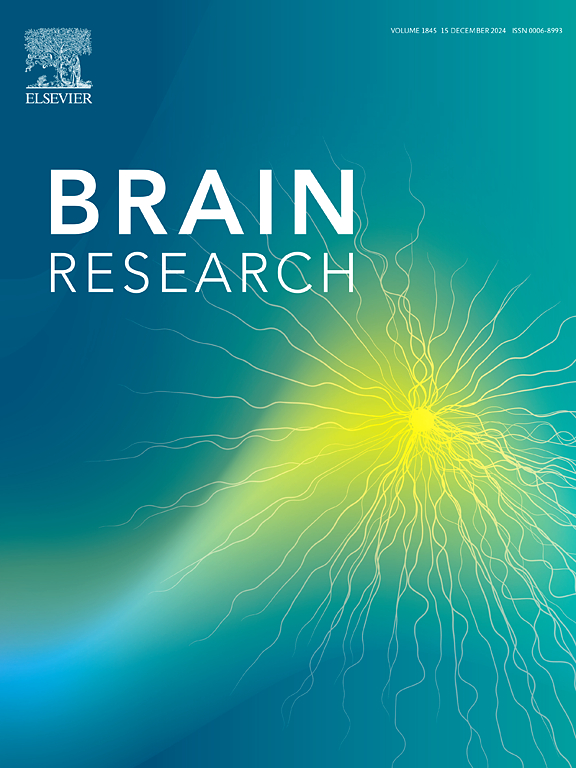Rhythmic deep-brain magnetic stimulation promotes angiogenesis and inhibits apoptosis by regulating the JAK2/STAT3 pathway in rats with superior sagittal sinus thrombosis
IF 2.7
4区 医学
Q3 NEUROSCIENCES
引用次数: 0
Abstract
The purpose of this study is to investigate the therapeutic value of rhythmic deep-brain magnetic stimulation (rDMS) and its potential mechanisms in Sprague-Dawley rats with superior sagittal sinus thrombosis (SSST). Rats were randomly allocated into Sham, SSST, SSST + rDMS and SSST + rDMS + AG490 group (N = 27 each). After 2 weeks of rDMS treatment, the motor function of rats was assessed using the open field, rotarod, and beam balance tests. Triphenyltetrazolium chloride (TTC) staining was used to determine the infarct volume. Magnetic resonance venography (MRV) and hematoxylin and eosin (H&E) staining were used to assess the recanalization of the superior sagittal sinus. The protein expression levels of JAK2, p-JAK2, STAT3, p-STAT3, VEGF-A, Bcl-2, Bax, and caspase-3 was analyzed by Western blotting. The mRNA expression of VEGF-A was determined by quantitative real-time polymerase chain reaction (qPCR). Immunofluorescence staining was used to evaluate the protein expression of the capillary marker CD31. Rats with SSST exhibited motor dysfunction compared to sham rats. rDMS therapy alleviated the motor dysfunction as indicated by increased move distance (p < 0.001), move time (p = 0.046) and latency to fall (p = 0.042), and decreased balance latency (p = 0.024) in rats with SSST. Remarkably, rDMS treatment reduced the infarction volume (p = 0.010) in the parasagittal sinus cortex without promoting recanalization of the superior sagittal sinus. rDMS therapy increased the expression of p-JAK2 (p = 0.006) and p-STAT3 (p < 0.001) in rats with SSST, but had no effect on the expression of JAK2 and STAT3. rDMS therapy also increased the mRNA and protein expression of VEGF-A (p = 0.002; p = 0.030) and the density of CD31-positive capillaries (p < 0.001) in rats with SSST. In addition, rDMS treatment increased the expression of Bcl-2 (p < 0.001) and decreased the expression of Caspase-3 (p < 0.001) and Bax (p < 0.001) in rats with SSST. AG490, an inhibitor of JAK2, eliminated the therapeutic effect of rDMS. In conclusion, rDMS therapy improves motor dysfunction, reduces parasagittal infarct, promotes angiogenesis, and suppresses apoptosis in rats with SSST by activating the JAK2/STAT3 signaling pathway.

求助全文
约1分钟内获得全文
求助全文
来源期刊

Brain Research
医学-神经科学
CiteScore
5.90
自引率
3.40%
发文量
268
审稿时长
47 days
期刊介绍:
An international multidisciplinary journal devoted to fundamental research in the brain sciences.
Brain Research publishes papers reporting interdisciplinary investigations of nervous system structure and function that are of general interest to the international community of neuroscientists. As is evident from the journals name, its scope is broad, ranging from cellular and molecular studies through systems neuroscience, cognition and disease. Invited reviews are also published; suggestions for and inquiries about potential reviews are welcomed.
With the appearance of the final issue of the 2011 subscription, Vol. 67/1-2 (24 June 2011), Brain Research Reviews has ceased publication as a distinct journal separate from Brain Research. Review articles accepted for Brain Research are now published in that journal.
 求助内容:
求助内容: 应助结果提醒方式:
应助结果提醒方式:


